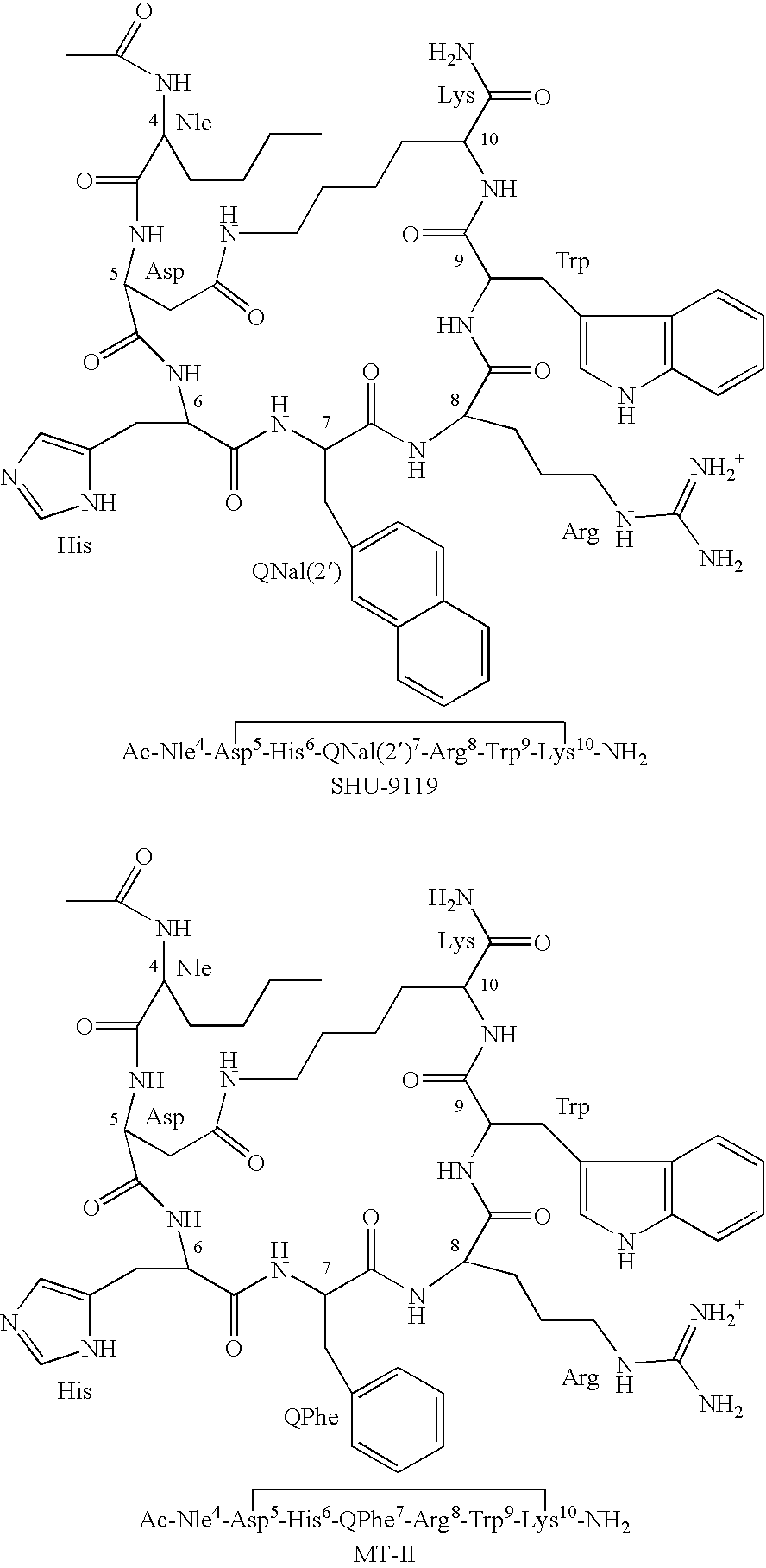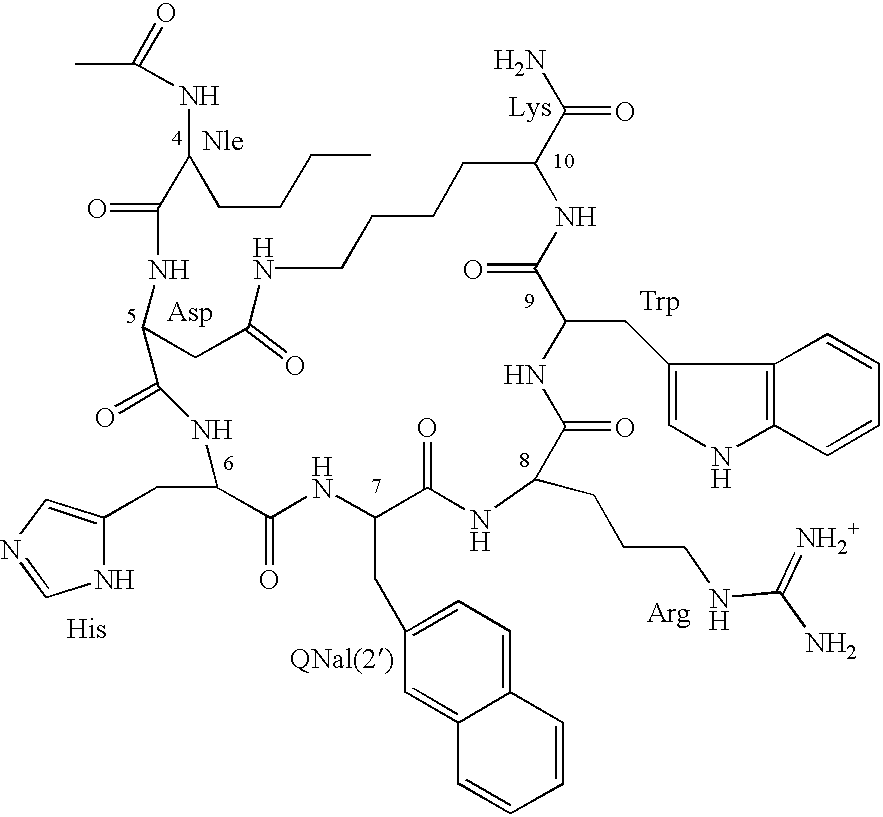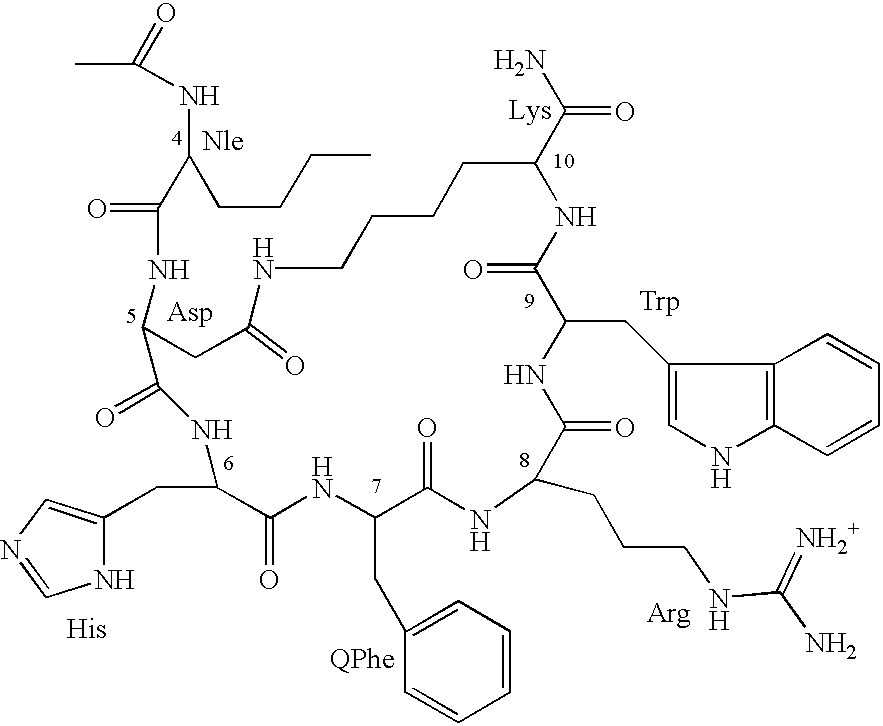Methods and reagents for discovering and using mammalian melanocortin receptor agonists and antagonists to modulate feeding behavior in animals
a technology agonist, which is applied in the field of cloning, expression and functional characterization of mammalian melanocortin receptor genes, can solve the problems that the knowledge of specific melanocortin receptors, the location of the central nervous system and the necessary pharmacological tools were not sufficiently developed at that time to solve the problem of this problem
- Summary
- Abstract
- Description
- Claims
- Application Information
AI Technical Summary
Benefits of technology
Problems solved by technology
Method used
Image
Examples
example 2a
Isolation of a Mouse .alpha.MSH (MC-1) Receptor cDNA
Probes isolated in Example 1 was used to screen a Cloudman melanoma cDNA library in order to isolate a full-length cDNA corresponding to the cloned probe. One clone was isolated from a library of 5.times.10.sup.6 clones screened as described below. This clone contained an insert of 2.6 kilobases (kb). The nucleotide sequence of the complete coding region was determined (see co-owned U.S. Pat. No. 5,532,347, incorporated by reference); a portion of this cDNA comprising the coding region was sequenced and is shown in FIGS. 1A and 1B (SEQ ID Nos:3 & 4).
example 2b
Isolation of a Human .alpha.MSH (MC-1) Receptor cDNA
In order to isolate a human counterpart of the murine melanocyte .alpha.MSH receptor gene disclosed in Example 2A and co-owned U.S. Pat. No. 5,532,347, a human genomic library was screened at high stringency (50% formamide, 42.degree. C.) using the human PCR fragments isolated as described in Example 1. A genomic clone was determined to encode an human MSH receptor (SEQ ID NO:5.; FIGS. 2A and 2B). The human MSH receptor has a predicted amino acid sequence (SEQ ID NO:6) that is 75% identical and colinear with the mouse .alpha.MSH receptor cDNA sequence. The predicted molecular weight of the human MSH.sup.R is 34.7 kD.
example 2c
Isolation of a Human ACTH (MC-2) Receptor cDNA
For cloning the ACTH receptor (MC-2), a human genomic library was screened at high stringency (50% formamide, 1M NaCl, 50 nM Tris-HCl, pH 7.5, 0.1% sodium pyrophosphate, 0.2% sodium dodecyl sulfate, 100 .mu.g / ml salmon sperm DNA, 10.times.Denhardt's solution, 42.degree. C.), using the human PCR fragments isolated as described in Example 1 herein and U.S. Pat. No. 5,280,112, incorporated by reference. A genomic clone was isolated that encodes a highly related G-coupled receptor protein (SEQ ID No:7 and FIGS. 3A and 3B). The predicted amino acid sequence (SEQ ID NO:8) of this clone is 39% identical and also colinear, excluding the third intracellular loop and carboxy-terminal tail, with the human MSH receptor gene product. The predicted molecular weight of this putative ACTHR is 33.9 kilodaltons (kD). This clone was identified as encoding an MC-2 receptor based on its high degree of homology to the murine and human MSH receptors, and the p...
PUM
 Login to View More
Login to View More Abstract
Description
Claims
Application Information
 Login to View More
Login to View More - R&D
- Intellectual Property
- Life Sciences
- Materials
- Tech Scout
- Unparalleled Data Quality
- Higher Quality Content
- 60% Fewer Hallucinations
Browse by: Latest US Patents, China's latest patents, Technical Efficacy Thesaurus, Application Domain, Technology Topic, Popular Technical Reports.
© 2025 PatSnap. All rights reserved.Legal|Privacy policy|Modern Slavery Act Transparency Statement|Sitemap|About US| Contact US: help@patsnap.com



